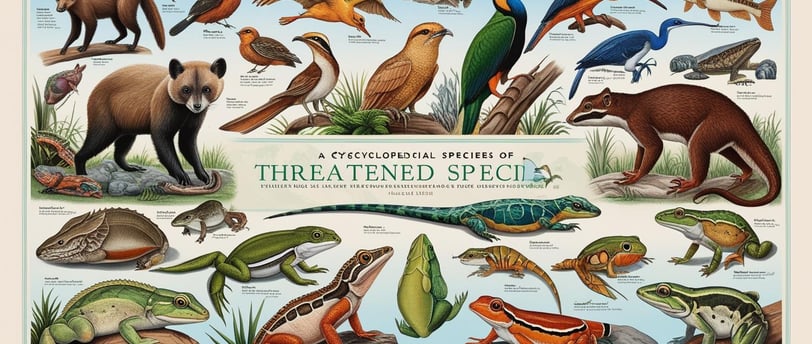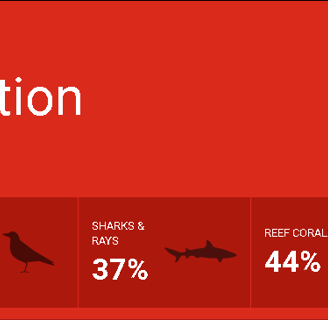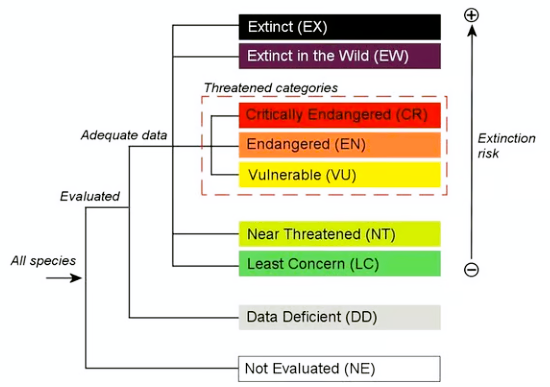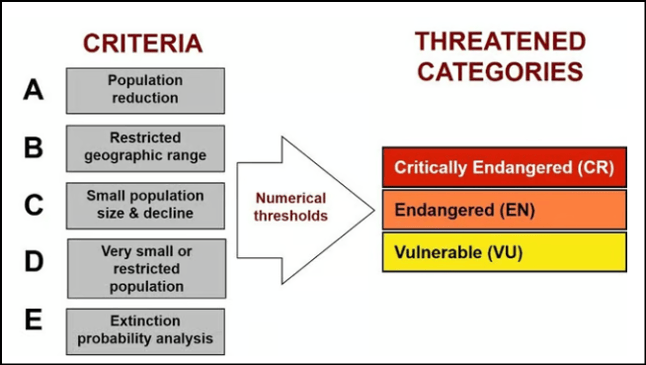The IUCN Red List of Threatened Species
The IUCN Red List is a critical indicator of the health of the world’s biodiversity. Far more than a list of species and their status, it is a powerful tool to inform and catalyse action for biodiversity conservation and policy change, critical to protecting the natural resources we need to survive. It provides information about range, population size, habitat and ecology, use and/or trade, threats, and conservation actions that will help inform necessary conservation decisions.
5/8/20244 min read


What is The IUCN Red List?
The IUCN Red List is a critical indicator of the health of the world’s biodiversity. Far more than a list of species and their status, it is a powerful tool to inform and catalyze action for biodiversity conservation and policy change, critical to protecting the natural resources we need to survive. It provides information about range, population size, habitat and ecology, use and/or trade, threats, and conservation actions that will help inform necessary conservation decisions.
The IUCN Red List Categories and Criteria
The IUCN Red List Categories and Criteria are intended to be an easily and widely understood system for classifying species at high risk of global extinction. It divides species into nine categories: Not Evaluated, Data Deficient, Least Concern, Near Threatened, Vulnerable, Endangered, Critically Endangered, Extinct in the Wild and Extinct.
Background & History
The IUCN Red List is used by government agencies, wildlife departments, conservation-related non-governmental organisations (NGOs), natural resource planners, educational organisations, students, and the business community. The Red List process has become a massive enterprise involving the IUCN Biodiversity Assessment and Knowledge Team staff, partner organisations and experts in the IUCN Species Survival Commission and partner networks who compile the species information to make The IUCN Red List the indispensable product it is today.
To date, many species groups including mammals, amphibians, birds, reef building corals and conifers have been comprehensively assessed. As well as assessing newly recognized species, the IUCN Red List also re-assesses the status of some existing species, sometimes with positive stories to tell. For example, good news such as the downlisting (i.e. improvement) of a number of species on the IUCN Red List categories scale, due to conservation efforts. The bad news, however, is that biodiversity is declining. Currently, there are more than 163,000 species on The IUCN Red List, with more than 45,300 species threatened with extinction, including 41% of amphibians, 37% of sharks and rays, 36% of reef building corals, 34% of conifers, 26% of mammals and 12% of birds.
Barometer of Life
In much the same way as a barometer measures atmospheric pressure to help us prepare for adverse weather conditions, The IUCN Red List measures the pressures acting on species, which guides and informs conservation actions to help prevent extinctions. This is why The IUCN Red List is often referred to as a Barometer of Life.
To date, more than 163,000 species have been assessed for the Red List. This is an incredible achievement. However, our work is not complete. We need to increase the number of assessments for animal, fungi and plant species to ensure that The IUCN Red List continues to serve as a powerful conservation tool.
THE GOAL: 260,000 species
The first Barometer of Life target of assessing at least 160,000 species was achieved by 2024. Our current goal, based on The IUCN Red List 2021-2030 Strategic Plan, is to assess at least 260,000 species and to reassess 142,000 of those species. Achieving this will further improve the ability of The IUCN Red List to provide the most up-to-date information on the health of the world’s biodiversity, and thereby guide critical conservation actions.
To reach 260,000 species, we need to do two things:
Increase the number of experts trained to carry out IUCN Red List assessments.
Significantly increase the number of species being assessed and reassessed each year.
Progress so far
Currently, the IUCN Biodiversity Assessment and Knowledge Team is managing data for over 163,000 species, and this number is set to increase substantially in the next few years. More than 156,500 species are well documented, with supporting information on ecology, population size, threats, conservation actions and utilization. There are also over 136,200 species with distribution maps. The data held on The IUCN Red List includes non-threatened as well as threatened species, and some taxonomic groups have been completely, or almost completely assessed, including mammals, birds, amphibians, freshwater crabs, warm-water reef-building corals, sharks and rays, groupers, wrasses, lobsters, freshwater fishes, cephalapods, dragonflies and damselflies, conifers, cycads, magnolias, maples, oaks, southern beeches and teas.
How the Red List is Used
The IUCN Red List shows us where and what actions need to be taken to save the building blocks of nature from extinction. It provides a straightforward way to factor biodiversity needs into decision-making processes by providing a wealth of useful information on species.
What are The IUCN Red List Categories and Criteria?
The IUCN Red List Categories indicate how close a species is to becoming extinct. The nine Red List Categories are shown below:
Species are assessed against five criteria (see below) based on geographic range, population size and population decline/increase, in addition to extinction probability analyses. These criteria determine which category is most appropriate for the species. You can find a useful summary of the criteria here.
Species in the Vulnerable, Endangered and Critically Endangered categories are collectively described as 'threatened'. The IUCN Red List does not include Not Evaluated species. Critically Endangered species may also be tagged as Possibly Extinct or Possibly Extinct in the Wild. For regional assessments, two additional categories are also available: 'Not Applicable' and 'Regionally Extinct'. You can find out more about regional assessments here.
References:
IUCN Red List of Threatened Species






